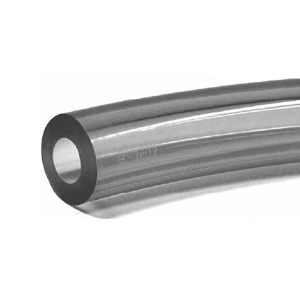Neoprene is the first successful synthetic rubber. Created and commercialised by the American chemical conglomerate DuPont, Neoprene is used widely in industrial, electronic and household applications.
The general-purpose rubber has several advantages over natural rubber, but its high cost restricts its use to some very specific applications.
Here, we investigate the development of the man-made material and drill into some of the properties and applications in a little more detail.
History and Development of Neoprene
Neoprene was first prepared in the 1930s by an American chemist in Wallace Hume Carothers’ research group at the DuPont Company.
Leading up to and during the 1930s, the demand for natural rubber was incredibly high. In the US, the automobile industry was expanding rapidly and importing rubber to use on tyres. Mobilising the war effort also required a lot of rubber. Each soldier needed about 14kg of rubber for footwear and clothing while warships needed about 75 tonnes of rubber each.
To help meet the growing demand for rubber, the US government planned an accelerated development programme working with chemical companies and research laboratories to develop new synthetic rubbers quickly.
Today, more than 70% of the rubber used in manufacturing processes is synthetic and a good portion of that is Neoprene.
Also known as polychloroprene or chloroprene, Neoprene is produced by the process of polymerisation; fastening molecules together into long chains known as polymers.
Originally known as Duprene, early Neoprene was expensive and gave the product a foul smell. Eventually, DuPont developed new production methods and the rubber was rebranded as Neoprene. It became a large commercial success with more than 300,000 tons of Neoprene produced each year.
Neoprene Properties
Neoprene is a good general-purpose rubber. It has a high tensile strength, making it good in industrial settings and other environments where there is a lot of movement.
Neoprene has good resistance to chemicals, water, heat, flames, oxygen and ozone. It has more resistance against water, solvents and heat compared with natural rubber.
The material is also good against weather and sunlight meaning that it ages well and does not need replacing too often.
Neoprene Applications
Neoprene has a strong range of properties, but its high cost means that it is often used for specific purposes.
Around The Home
Neoprene is used in a wide array of household products, some of which may not come to mind immediately. Because of its elasticity and resistance to bending, neoprene is used in a variety of sports products like wrist supports, knee and elbow supports as well as extra padding for insoles.
It is also used in wet suits, dry suits, waders and safety gloves to help keep water and/or dangerous chemicals away from your skin without restricting body movement too much.
Automotive And Construction
Because of Neoprene’s impressive resistance results, it is widely used in high-stress environments such as the construction and automotive industries.
In automotive settings, neoprene is regularly used for parts that are exposed to movement, such as:
- Hose coverings
- CVJ boots
- Transmission belts
- Vibration mounts
- Shock absorber seals
Good weathering performance, ozone resistance and resistance to compression and temperature make it ideal for specific uses in the construction industry as well.
It is regularly used for seals on windows and bridges, washers, custom-made window gaskets, deviator pads and lift door astragals.
Neoprene Tubing
Neoprene is widely used for industrial rubber-type tubing. Neoprene offers greater resistance to cracking than traditional red rubber and offers good chemical resistance too – making it ideal for the transfer of air and liquids, but not oils.
Neoprene tubing can be used across a range of temperatures, including for the transportation of high-temperature liquids.
Cable Management
Neoprene is regularly used as a protective covering for cables and wires. With a good range of resistances, the natural rubber alternative is the perfect cover for cables and wires that are subject to lots of bending and twisting.
It is used regularly on cables and wires for heavy industrial applications and consumer electronics that are subject to lots of movement.
Neoprene’s flexibility means that it can be applied to wires and cables easily using a sleeve expander, as shown in the video below.







